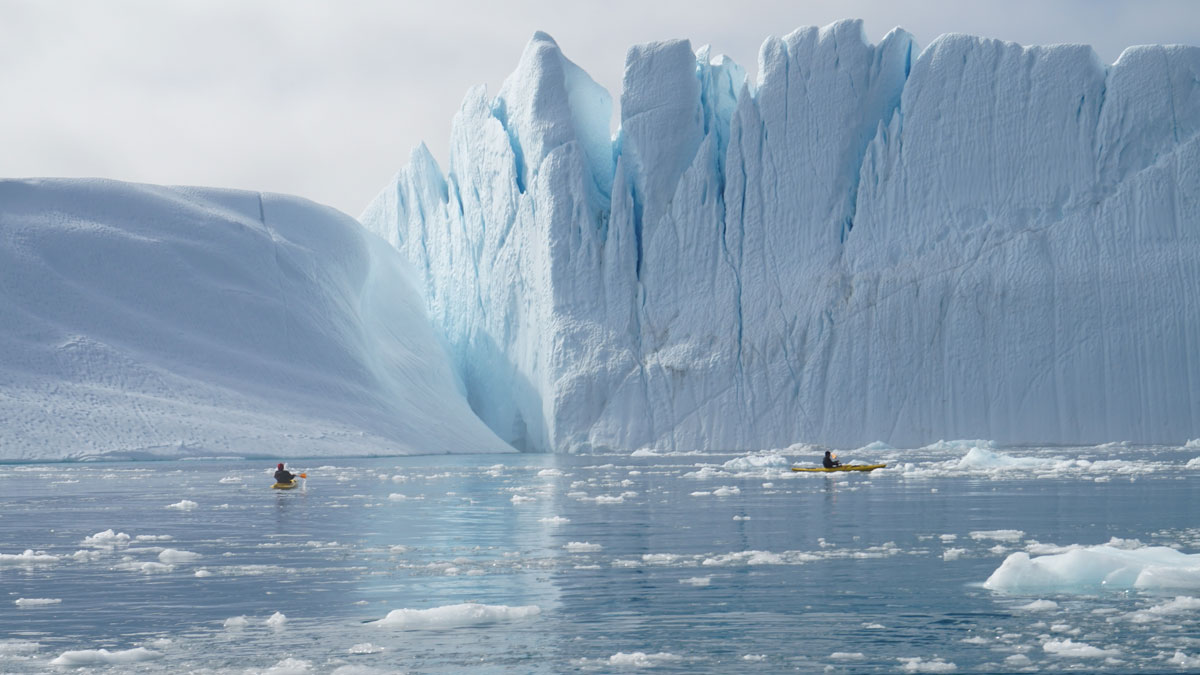Source: AGU Advances
Warm water flowing into fjords and beneath ice shelves will continue to be a prime cause of glacial melting as global temperatures rise. This melting will, in turn, contribute to sea level rise and increasing inundation of coastal areas.
As emission reductions fall short of international goals, scientists and some members of the public are discussing possibilities for using geoengineering to mitigate coastal flooding and other detrimental effects of climate warming. One proposal involves building barriers in the ocean to block warm water from reaching glaciers. For example, some scientists have proposed placing a floating steel curtain or an underwater rock wall around parts of the Greenland ice sheet to limit the influx of warm, ice-melting currents.
Such barriers would be difficult to construct, and it’s not clear how effective they would be, Hopwood et al. point out in a recent commentary focusing on the potential effects of this method on Greenland’s largest glacier, Sermeq Kujalleq.
What’s more, underwater walls are likely to come with substantial downsides for marine ecosystems. Modeling suggests that such barriers would interrupt a process by which glacial runoff pulls nutrient-rich water up from the deep ocean. This disruption, in turn, would reduce phytoplankton levels near the surface and the fish populations that depend on them—ultimately affecting the Greenlanders that rely on these fish for their livelihoods. Walls might also disrupt fish migration patterns, adding to the problem. The side effects of underwater walls are “unlikely to be socially acceptable,” the authors write. Walls built to protect Antarctic glaciers would have similar effects on local ecosystems, they suggest.
The researchers note that although glacier-guarding barriers are both hypothetical and unrealistic at this point, interest in geoengineering is likely to grow in the coming decades. Thus, it is important to keep the unintended consequences of such projects in mind.
Some researchers have suggested that geoengineering approaches should be tested so that policymakers can assess their costs and benefits on the basis of real-world data. But before they seriously consider these techniques, write Hopwood and colleagues, it’s crucial that scientists have conversations with local stakeholders to understand how the potential trade-offs could affect their lives and livelihoods. (AGU Advances, https://doi.org/10.1029/2025AV001732, 2025)
—Saima May Sidik (@saimamay.bsky.social), Science Writer



